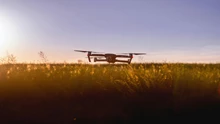
Researchers Team, Indian Institute of Science (IISc) recently developed a low-cost & effective method to identify the presence of adulterants in milk, by analyzing the deposition patterns after evaporation. This method is designed by Virkeshwar Kumar, a Postdoctoral Researcher, and Susmita Dash, Assistant Professor in the department of mechanical engineering, published in ACS Omega.
The problem of Milk Adulteration:
Milk Adulteration is a major concern in India, where a majority of supplied milk fails to comply with the standards set by authorities. As we know water is frequently added to increase milk volume, along with urea, which makes the watered-down version whiter and foamier- this can potentially endanger the normal functioning of the liver, heart, and kidneys.
Details of Published Method:
As per the statement issued, “The Researchers team used the method to test for the presence of urea and water- the most common adulterants- but suggested that such a method can also be extended to other adulterants”.
In this technique, researchers looked at evaporative deposition patterns – those emerging when milk completely evaporates, causing volatile components to dissipate, and solids or non-volatile components to arrange themselves in distinctive patterns.
“Milk with and without water or urea displayed very different evaporative patterns. Unadulterated milk consisted of a central, irregular blob-like pattern. Water was found to cause distortion or complete loss of this distinctive pattern, depending on how much is added. Urea also completely removes the central pattern; being a non-volatile component, it does t evaporate but crystallizes, starting at the interior of milk drops, extending along the periphery,” the researchers found.
Current techniques such as using a lactometer and looking for changes in the freezing point of milk can be used to identify the presence of water, IISc said. For example, as per the institute, the technique of freezing point can detect water only up to 3.5% of the total milk concentration.
Moreover, biosensors with high sensitivity are available to test for urea, they are costly, and their accuracy tends to reduce with time.
On the other hand, the researcher was able to identify water concentrations as high as 30% and urea concentrations in diluted milk as low as 0.4% using this type of pattern analysis. Therefore this technique could be a convenient replacement when access to such equipment is not available
Apart from this, it doesn’t need a laboratory or other specialized processes and can be easily adapted for use even in remote areas and rural places.
This technique can potentially be extended to test for adulterants in other beverages and products too. “The pattern that you get is highly sensitive to what is added to it. So, I think this method can be used to detect impurities in volatile liquids. It will be interesting to take this method forward for products such as honey, which is often adulterated,” Susmita Dash said.
(Source: The Times of India)











